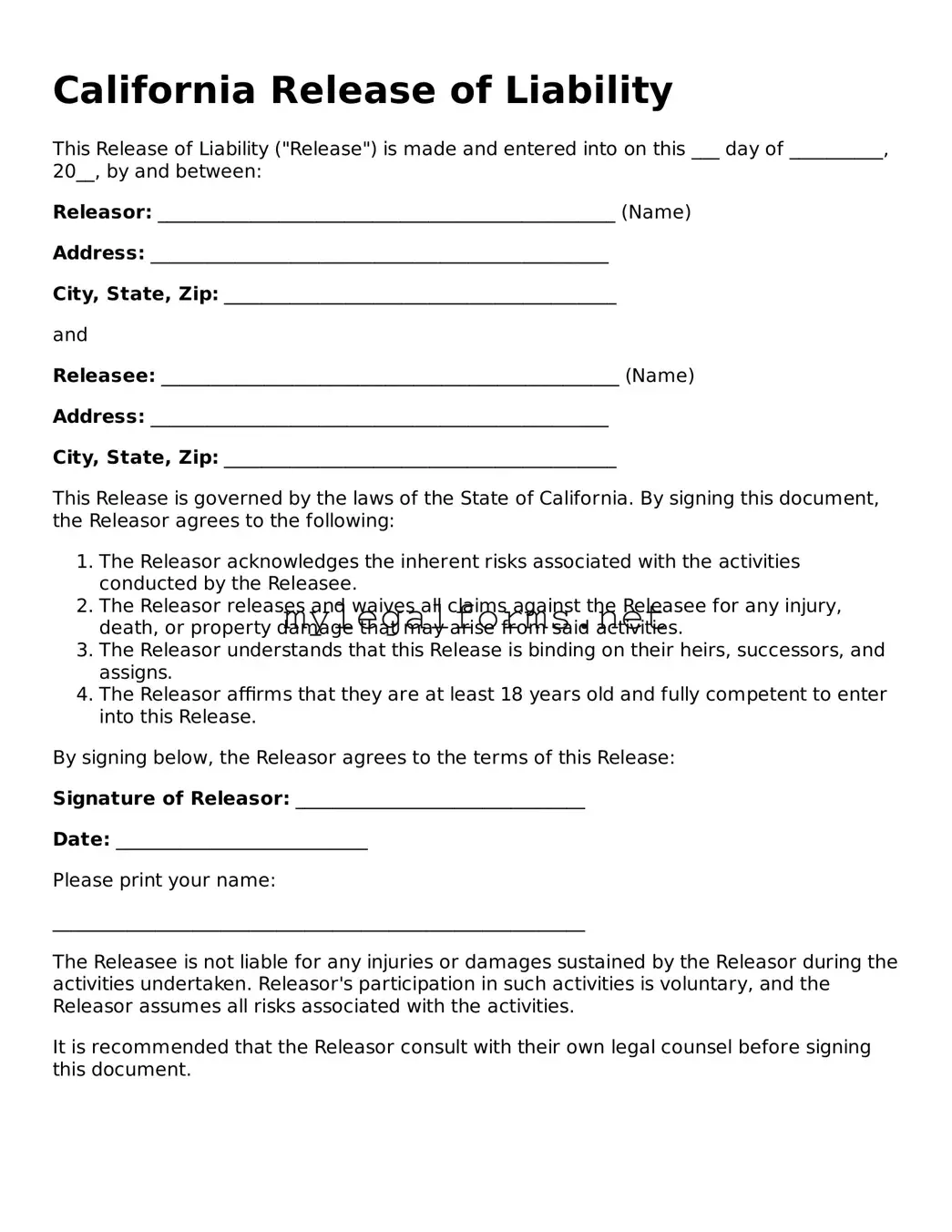California Release of Liability
This Release of Liability ("Release") is made and entered into on this ___ day of __________, 20__, by and between:
Releasor: _________________________________________________ (Name)
Address: _________________________________________________
City, State, Zip: __________________________________________
and
Releasee: _________________________________________________ (Name)
Address: _________________________________________________
City, State, Zip: __________________________________________
This Release is governed by the laws of the State of California. By signing this document, the Releasor agrees to the following:
- The Releasor acknowledges the inherent risks associated with the activities conducted by the Releasee.
- The Releasor releases and waives all claims against the Releasee for any injury, death, or property damage that may arise from said activities.
- The Releasor understands that this Release is binding on their heirs, successors, and assigns.
- The Releasor affirms that they are at least 18 years old and fully competent to enter into this Release.
By signing below, the Releasor agrees to the terms of this Release:
Signature of Releasor: _______________________________
Date: ___________________________
Please print your name:
_________________________________________________________
The Releasee is not liable for any injuries or damages sustained by the Releasor during the activities undertaken. Releasor's participation in such activities is voluntary, and the Releasor assumes all risks associated with the activities.
It is recommended that the Releasor consult with their own legal counsel before signing this document.
